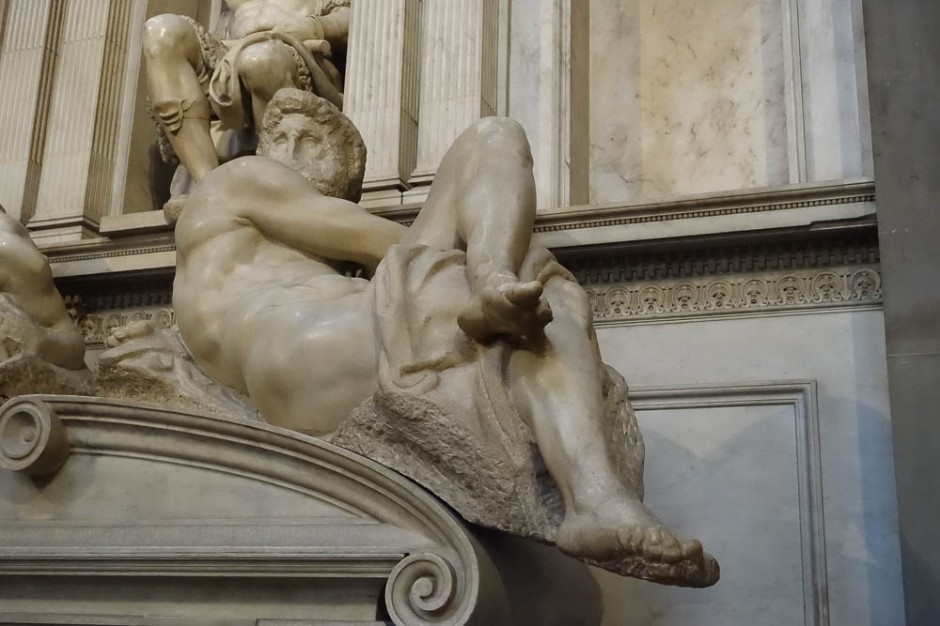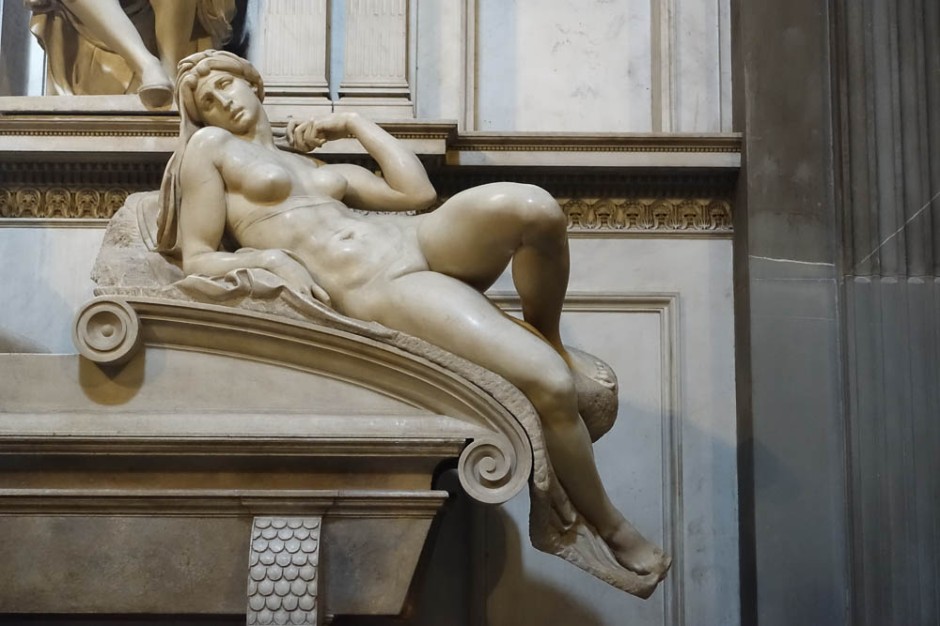
Looking back over my pictures from Florence, I realise I failed to cover, among other things, the Medici Chapels. The Chapels are to the rear of the church of San Lorenzo, designed by Brunelesschi to a commission from the Medici over the period 1425-46. To the rear of the church are two chapels housing the tombs of some members of the Medici family. The larger, and later chapel, is deeply gloomy and depressing. Finished entirely in dark stone – pierre dure – it houses the sarcophagi of a number of C17 Medici dukes. The grandness of the memorials being in contrast to the declining power and influence of those being remembered. The smaller chapel, the so-called New Sacristy, is a work of the early C16, primarily by Michelangelo and containing two Medici tombs designed by him, for Lorenzo, Duke of Urbino (1492-1519) and Giuliano, Duke of Nemours (1479-1516). They were grandson and third son of Lorenzo the Magnificent, facts which were clearly no guarantee of a long life.
On top of the two tombs are four human figures representing Night and Day on one, Dawn and Dusk on the other. These are extraordinary master works by Michelangelo demonstrating his mastery of anatomy and the human form as much as his mastery of sculpture. The figures, although exaggerated in their musculature in the Michelangelo way, seem to live and breath in front of you. The figure of night has been polished so that she seems to glow in moonlight. Whilst the male figure of Day, left deliberately with the head largely unworked, clearly draws from Greek and Roman torsos which were being re-discovered at that time, particularly the Belvedere torso, now held in the Vatican.
The Medici Chapels are not the most popular sights in Florence so it was not particularly crowded when we went. The opportunity to examine this sculptures at close quarters is remarkable, and worth the visit to Florence alone.


